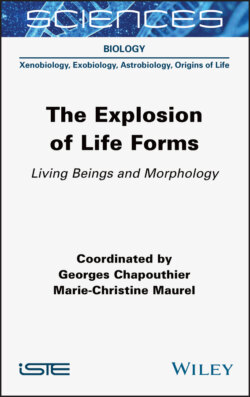Читать книгу The Explosion of Life Forms - Группа авторов - Страница 11
1.1. Introduction
ОглавлениеSince its formation 4.5 billion years ago, the Earth has occupied a unique place in the solar system. The presence of liquid water, the first cradle of life, on 70% its surface is one of the major features of its appearance: 90% of life’s history has taken place in water and we still ask ourselves numerous questions about its formation today.
Around 3.85 billion years ago, mineral matter and organic matter intertwined to produce, by chemical reactions, the amino acids of proteins, the constituents of the nucleic acids RNA and DNA (nitrogenous bases, sugars, phosphates), and all sorts of blocks that contributed to the design of the matrix of living things. Less than a billion years after the accretion of our planet, the elementary building blocks of biological molecules were thus formed on the primitive Earth. Today, life is omnipresent, covering the entire planet and its systems, at all latitudes, including our skin and our digestive tract, inhabited by thousands of bacteria species.
There is a very wide variety of shapes, from rod-shaped bacilli to spherical shells, as well as helical, spiral or star-shaped structures, to name but a few of the forms observed in microscopic bacteria, that are living either in isolation, in filamentous association, in symbiosis, etc. The diversity of shapes and sizes is also observed in viral particles (Adriaenssens et al. 2018) and in multicellular organisms such as humans, snails, ferns, geckos, etc.
And diversity also manifests itself over time: nowadays, we no longer find pithecanthropes, lepidodendrons, tyrannosaurs, ammonite trilobites, etc.
Are the varieties observed today the only ones possible? Are there other paths, other formats, other modes that have not (yet) been explored by nature? Or by our own understanding? Or by our technological limits?
The total number of living species is estimated at 1012, and only 105 of these have been identified to date (Locey and Lennon 2016). We only know 2–10% of the species that exist today, which represents 1/1,000 of the species that have existed for 3.85 billion years (Mora et al. 2011).
These data alone justify the weakness of our generalizations.
